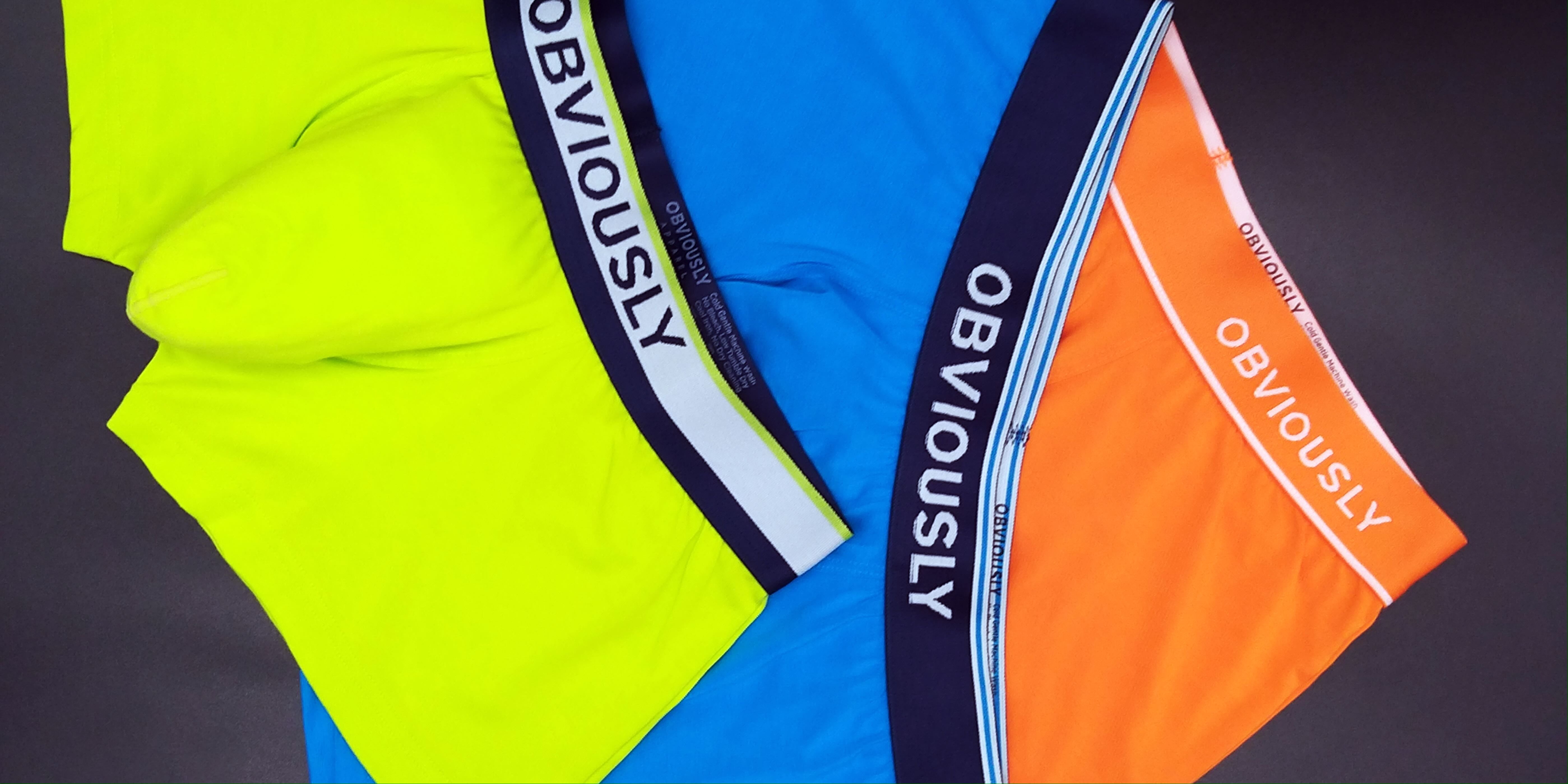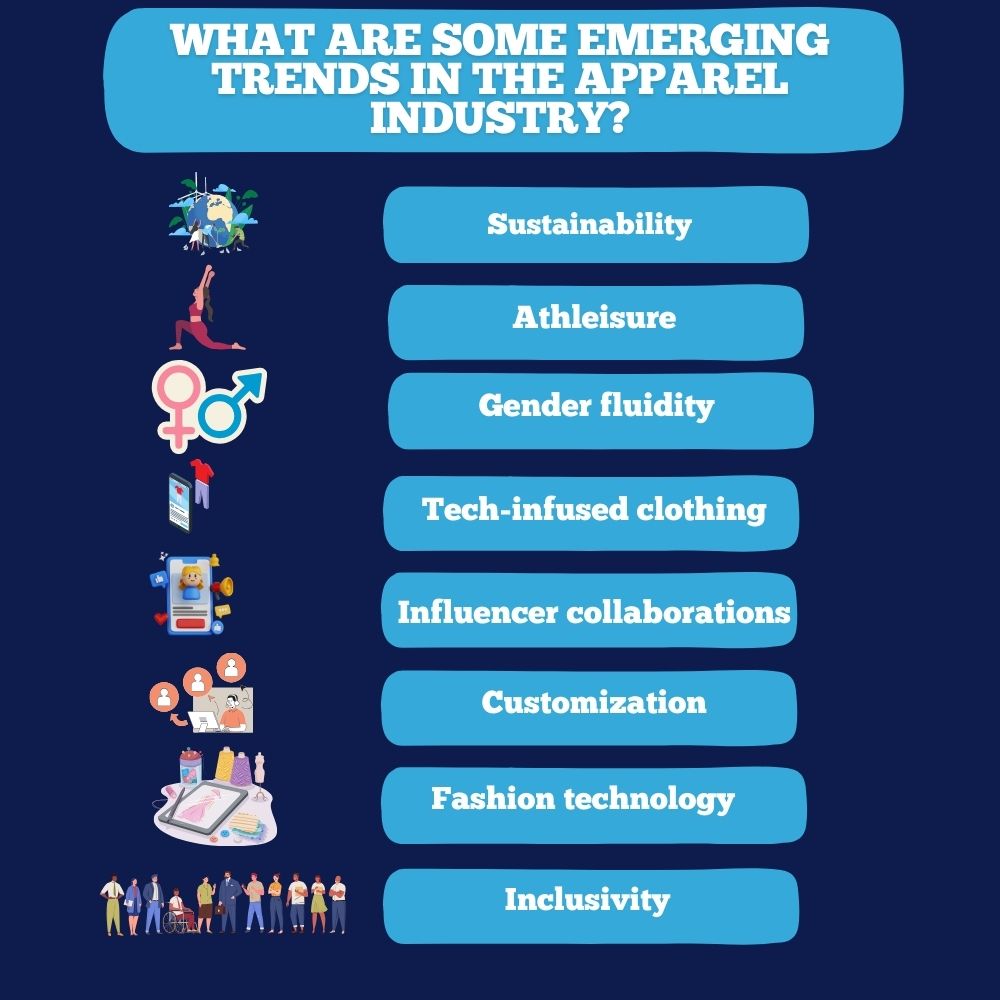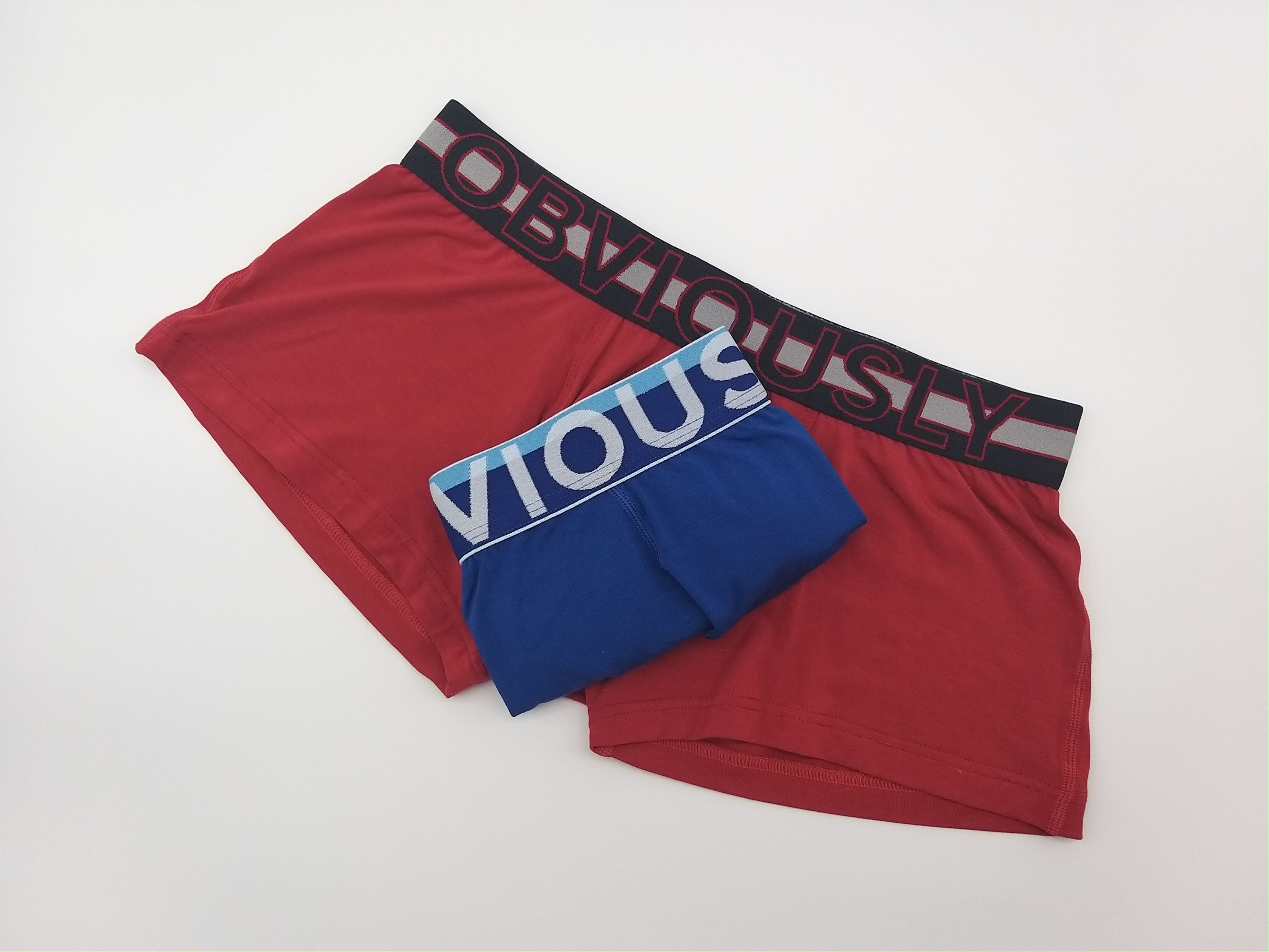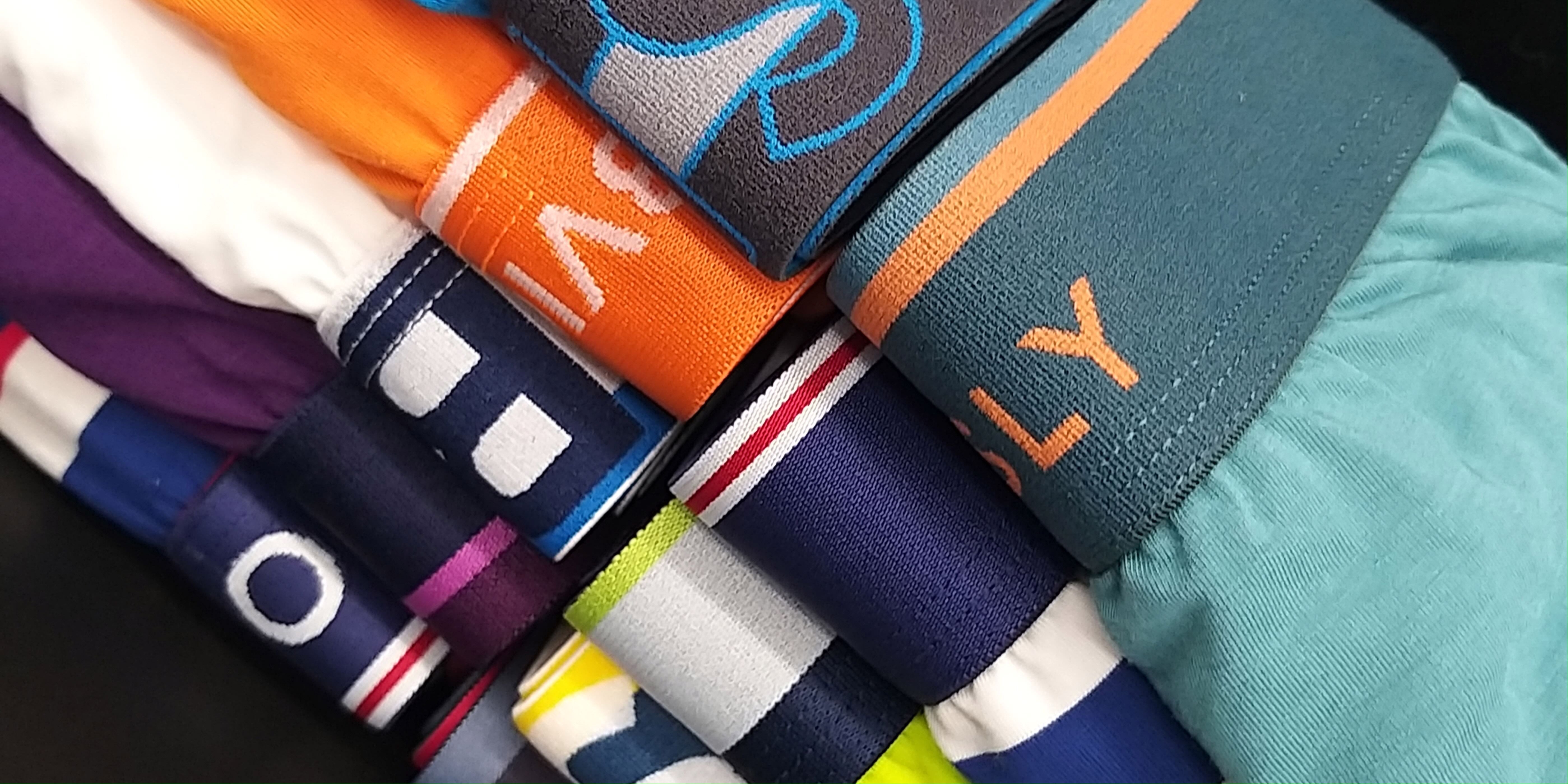
What Is Apparel: A Beginner's Guide to Clothing Basics
Have you ever wondered what makes a piece of clothing more than just fabric stitched together? If you're curious about the world of apparel and want to learn more about the different types of clothing and their functions, you're in for a treat. In this comprehensive guide, we'll demystify the concept of apparel and provide you with a solid foundation to understand its intricacies. From everyday essentials to specialized garments, we'll explore the diverse range of clothing options available and help you gain a deeper appreciation for the artistry and functionality behind each piece.
What Is Apparel?
Apparel refers to the clothing and garments that people wear to cover and adorn their bodies. It encompasses a wide range of items, including tops, bottoms, dresses, suits, outerwear, and accessories. Clothing serves both functional and aesthetic purposes, providing protection, comfort, and a means of self-expression. Understanding apparel is essential for fashion beginners, as it allows them to make informed choices about what to wear and how to reflect their style. By familiarizing themselves with different types of clothing and their purposes, individuals can build a versatile wardrobe that meets their needs and showcases their unique personalities.
What Are The Different Types Of Apparel?
Various types of apparel cater to different needs and occasions. Here is a list of some common types of clothes:
Tops
This category includes shirts, blouses, t-shirts, tank tops, undershirts, and sweaters. Tops are typically worn on the upper body and come in a variety of styles, fabrics, and designs, allowing individuals to express their style and create versatile looks for any occasion.
Bottoms
Bottoms refer to clothing worn on the lower body, such as pants, jeans, skirts, shorts, and leggings. They come in different lengths, cuts, and materials to suit various preferences and occasions, providing both comfort and style for everyday wear or special events.
Dresses
Dresses are one-piece garments that cover both the upper and lower body. They come in various styles, including maxi dresses, cocktail dresses, sundresses, and formal gowns, and are suitable for different events and settings, allowing individuals to effortlessly showcase their femininity and elegance.
Suits
Suits are typically composed of a matching jacket and trousers or skirt. They are commonly worn in professional and formal settings, such as business meetings, interviews, or special occasions, making individuals look polished, sophisticated, and ready to make a lasting impression.
Outerwear
Outerwear includes jackets, coats, blazers, and cardigans. These garments are designed to be worn over other clothing to provide warmth, protection from the elements, or to add a stylish layer to an outfit, ensuring both practicality and fashion-forwardness.
Activewear
Activewear is specifically designed for physical activities and exercise. It includes items like sports bras, leggings, athletic shorts, and performance tops, which offer comfort, flexibility, and moisture-wicking properties, enabling individuals to move freely and confidently during their workouts.
Accessories
Accessories are items that complement an outfit and add a finishing touch. They include items like hats, scarves, belts, handbags, jewelry, and sunglasses, which can enhance and personalize a look, allowing individuals to showcase their unique style and elevate their overall appearance.
Footwear
Footwear refers to the various types of shoes and boots that are worn on the feet. There are numerous styles and designs available to suit different purposes and occasions. Some common types of footwear include sneakers, sandals, boots, heels, flats, loafers, and athletic shoes. Footwear not only provides protection and support for the feet but also plays a significant role in completing an outfit and enhancing overall style.
Underwear
Underwear is a type of apparel worn underneath outer clothing to provide comfort, support, and hygiene. It includes items such as bras, panties, boxers, briefs, thongs, and undershirts. Underwear comes in various styles, materials, and designs to suit different preferences and needs. It serves as a foundation for an outfit and helps to ensure a smooth and comfortable fit. Properly fitting and comfortable underwear is essential for overall comfort and confidence throughout the day.
These are just a few examples of the different types of apparel available. Each type serves a specific purpose and can be combined in various ways to create unique and stylish outfits for different occasions.
What Are The Most Common Textiles Used To Make Apparel?
The most common textiles used to make apparel include:
- Cotton: Cotton is a natural fiber known for its breathability, softness, and comfort. It is widely used in various types of clothing, from t-shirts to jeans, due to its versatility and ability to absorb moisture.
- Polyester: Polyester is a synthetic fiber that is durable, wrinkle-resistant, and quick-drying. It is commonly used in activewear, outerwear, and blended with other fibers to enhance their properties.
- Silk: Silk is a luxurious and delicate natural fiber known for its smooth texture and lustrous appearance. It is often used in high-end clothing, such as dresses and formalwear, due to its elegant and lightweight qualities.
- Wool: Wool is a natural fiber obtained from sheep and is known for its warmth and insulation properties. It is commonly used in sweaters, coats, and winter wear to provide comfort and protection in cold weather.
- Linen: Linen is a natural fiber made from the flax plant and is known for its breathability and lightweight nature. It is commonly used in summer clothing, such as shirts and dresses, due to its ability to keep the body cool.
- Bamboo: Bamboo is a natural fiber known for its softness, breathability, and eco-friendly properties. It is derived from the bamboo plant and is used in a wide range of clothing, including dresses, blouses, and skirts. Bamboo fabric has a luxurious feel similar to silk and offers excellent moisture-wicking abilities, making it a popular choice for comfortable and sustainable apparel.
- Nylon: Nylon is a synthetic fiber known for its strength, durability, and elasticity. It is commonly used in activewear, swimwear, and hosiery due to its ability to stretch and retain its shape.
- Denim: Denim is a sturdy cotton fabric that is commonly used in the production of jeans and other casual wear. It is known for its durability and distinctive twill weave.
- Leather: Leather is a material made from the skin of animals, primarily cows. It is commonly used in the production of jackets, shoes, and accessories due to its durability and timeless appeal.
- Synthetic Blends: Many garments are made from a combination of different fibers, such as cotton-polyester blends or wool-acrylic blends. These blends offer a balance of comfort, durability, and affordability.
These textiles are widely used in the fashion industry and offer a range of characteristics to meet different needs and preferences in attire production.
How Does Apparel Differ Across Different Cultures and Regions?
Africa
Clothing in Africa has a rich and diverse history, with each region and ethnic group showcasing unique styles and traditions. Traditional African clothing often features vibrant colors, intricate patterns, and a variety of textiles, such as kente, ankara, and mud cloth. In modern times, African fashion has evolved to incorporate contemporary designs while still embracing cultural heritage. African designers have gained international recognition, showcasing the continent's creativity and innovation in the global fashion industry.
Asia
Asia is home to a multitude of cultures, each with its distinct clothing traditions. Traditional Asian garments, such as the kimono in Japan, the saree in India, and the hanbok in Korea, reflect the rich cultural heritage of these countries. Over time, globalization and Western influence have led to the adoption of more Western-style clothing in many Asian regions. However, traditional attire continues to be worn for special occasions and cultural celebrations, preserving the unique identity of each culture.
Europe
Europe has a long history of fashion and has greatly influenced global clothing trends. Traditional European clothing varied across regions, with styles ranging from the elegant dresses of the Victorian era to the folk costumes of Eastern Europe. In the modern era, European fashion has become synonymous with luxury brands, haute couture, and high-end designer labels. European cities like Paris, Milan, and London are renowned fashion capitals, hosting prestigious fashion weeks and setting trends worldwide.
North America
North American clothing has been shaped by diverse cultural influences, including Native American traditions, European colonization, and African diaspora. Native American tribes have their distinct clothing styles, often featuring intricate beadwork and vibrant colors. European settlers brought their own fashion traditions, which evolved over time to reflect the changing societal norms. In recent years, North American fashion has become more inclusive, embracing diversity and celebrating individuality through a mix of global influences.
South America
South America boasts a rich tapestry of indigenous cultures, each with its unique clothing traditions. Traditional garments like the poncho in the Andean region and the huipil in Mexico and Central America showcase the vibrant colors and intricate craftsmanship of the region. In modern times, South American fashion has embraced a fusion of traditional and contemporary styles, with designers incorporating indigenous textiles and techniques into modern designs, promoting cultural preservation and sustainability.
Oceania
Oceania encompasses a vast region with diverse island cultures. Traditional clothing in Oceania often features natural materials like bark cloth, feathers, and shells, reflecting a close connection to the environment. In modern times, Oceania has seen a blend of traditional and Western influences in clothing styles. Indigenous designs and motifs are incorporated into contemporary fashion, highlighting the unique cultural heritage of the Pacific Islands.
As the world becomes more interconnected, cultural exchange and globalization have influenced clothing styles across continents. However, many regions continue to embrace and celebrate their traditional clothing, preserving their cultural identity and heritage in the ever-evolving world of fashion.
What Are Some Emerging Trends In The Apparel Industry?
Some emerging trends in the apparel industry include:
Sustainability: With growing concerns about the environment, sustainable fashion has gained popularity. Consumers are increasingly looking for clothing made from eco-friendly materials, such as organic cotton, recycled fibers, and low-impact dyes. Brands are also focusing on ethical manufacturing practices and reducing waste.
Athleisure: The athleisure trend combines elements of activewear and casualwear, creating comfortable and functional clothing that can be worn both at the gym and in everyday life. This trend has seen a rise in the popularity of leggings, joggers, and athleisure-inspired footwear.
Gender fluidity: The fashion industry is increasingly embracing gender fluidity, with the introduction of gender-neutral clothing lines. These collections aim to break traditional gender norms and provide more inclusive options for individuals who do not conform to traditional binary gender roles.
Tech-infused clothing: Advancements in technology have led to the rise of smart clothing and wearables. These garments often incorporate features such as temperature regulation, moisture-wicking properties, and built-in sensors for tracking fitness or health data.
Influencer collaborations: Brands are increasingly collaborating with social media influencers and celebrities to create limited-edition collections. These collaborations not only generate buzz around the brand but also provide consumers with access to unique and exclusive designs.
Customization: Personalization and customization are becoming more popular in the apparel industry. Companies are offering options for customizing clothing items, such as adding personalized embroidery or choosing from a range of colors and patterns. This allows consumers to create unique pieces that reflect their style.
Fashion technology: The integration of technology into fashion has led to innovations such as 3D printing, virtual reality fashion shows, and augmented reality shopping experiences. These technologies are changing the way we design, produce, and consume fashion.
Inclusivity: The fashion industry is becoming more inclusive, with brands expanding their size ranges to accommodate a wider range of body types. There is also a growing focus on representing diverse models in advertising and fashion campaigns.
These are just a few of the emerging trends in the apparel industry. As fashion continues to evolve, it is important to stay informed and embrace the changes shaping the industry.

Conclusion
In conclusion, apparel is a fundamental aspect of human culture and self-expression. Understanding the basics of clothing, including different types of apparel and their purposes, is essential for fashion beginners. Throughout history, clothing has evolved across different cultures and regions, reflecting unique traditions, styles, and influences. From the vibrant and diverse textiles of Africa to the intricate designs of Asia, and the fashion-forward trends of Europe and North America, clothing has transformed to embrace modernity while preserving cultural heritage. As the world becomes more interconnected, fashion continues to evolve, incorporating global influences and celebrating diversity. By appreciating the rich history and cultural significance of apparel, individuals can navigate the world of fashion with confidence and create their unique style statements.
Final Thoughts
Experience the epitome of comfort with Obviously Apparel. We take pride in delivering exceptional quality in every aspect of our underwear collection. By using premium bamboo and micro modal fabrics, we have created underwear that offers unparalleled comfort and support. Whether you're hitting the gym or going about your daily routine, Obviously Apparel's men's underwear is meticulously designed to meet your specific requirements. Immerse yourself in a world of unrivaled comfort and embrace a lifetime of luxurious ease with Obviously Apparel.
Sources
- https://www.umi1.co.uk/blogs/fashion-style/african-fashion-history-and-future
- https://www.encyclopedia.com/fashion/encyclopedias-almanacs-transcripts-and-maps/clothing-early-asian-cultures
- https://historyofeuropeanfashion.wordpress.com/
- https://www.lovetoknow.com/life/style/north-america-history-indigenous-peoples-dress
- https://vamospanish.com/discover/traditional-dress-latin-america/
- https://www.encyclopedia.com/fashion/encyclopedias-almanacs-transcripts-and-maps/clothing-oceania
- https://en.wikipedia.org/wiki/Denim
- https://en.wikipedia.org/wiki/Suit
- https://en.wikipedia.org/wiki/Athleisure
- https://3dlook.ai/content-hub/top-11-fashion-technologies/




